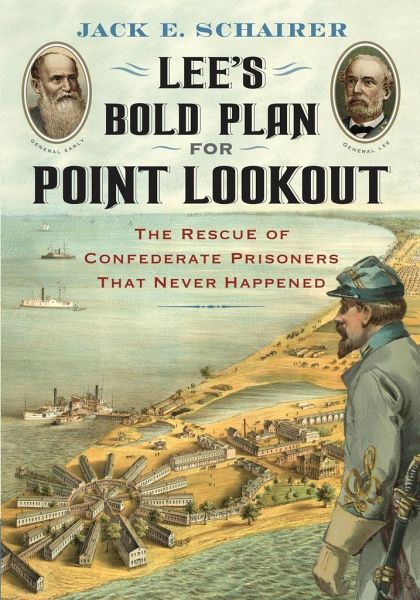
Lee's Bold Plan for Point Lookout
The Rescue of Confederate Prisoners That Never Happened
Versandkostenfrei!
Versandfertig in 1-2 Wochen
37,99 €
inkl. MwSt.

PAYBACK Punkte
19 °P sammeln!
In July 1864, while hemmed in by Grant at Richmond, General Robert E. Lee conceived a bold plan designed not only to relieve Lynchburg and protect the Confederate supply line but also to ultimately make a bold move on Washington itself. A major facet of this plan, with the addition of General Jubal Early's forces, became the rescue of the almost 15,000 Confederate prisoners at Point Lookout, a large Union prison camp at the confluence of the Potomac River and Chesapeake Bay. With international recognition hanging in the balance for the Confederacy, the failure of Lee's plan saved the Union and...
In July 1864, while hemmed in by Grant at Richmond, General Robert E. Lee conceived a bold plan designed not only to relieve Lynchburg and protect the Confederate supply line but also to ultimately make a bold move on Washington itself. A major facet of this plan, with the addition of General Jubal Early's forces, became the rescue of the almost 15,000 Confederate prisoners at Point Lookout, a large Union prison camp at the confluence of the Potomac River and Chesapeake Bay. With international recognition hanging in the balance for the Confederacy, the failure of Lee's plan saved the Union and ultimately changed the course of the war. This work focuses on the many factors that contributed to this eventual failure, including Early's somewhat inexplicable hesitancy, a significant loss of time for Confederate troops en route, and aggressive defensive action by Union General Lew Wallace. It also discusses various circumstances such as Washington's stripped defenses, the potential release of imprisoned Southern troops and a breakdown of Union military intelligence that made Lee's gamble a brilliant, well-founded strategy.














